The One Pillar Pagoda
Hanoi's Iconic Landmark Not To Be Missed
Hanoi has long been famed for its rich culture and history. The magnetic combination between timeless values and modern changes makes this city a truly unique capital. Among several symbolic monuments that shape the city’s charm, the One Pillar Pagoda is definitely an exclusive destination, which should always be on your bucket-list as you make your way to Hanoi.
The One Pillar Pagoda (officially known as Dien Huu Pagoda) is renowned for its remarkable architecture: the entire structure is built on a single pillar that rises from the center of a serene lotus pond. It is located in the Ba Dinh District, conveniently within walking distance to the Ho Chi Minh Complex, which includes Ba Dinh Square, Ho Chi Minh Mausoleum, and Ho Chi Minh Museum. The history of the One Pillar Pagoda dates back to the Ly Dynasty, marking a significant period of Buddhism's growth in Vietnam. This monument serves not only as a popular tourist destination but also as a sacred site for local worshippers.
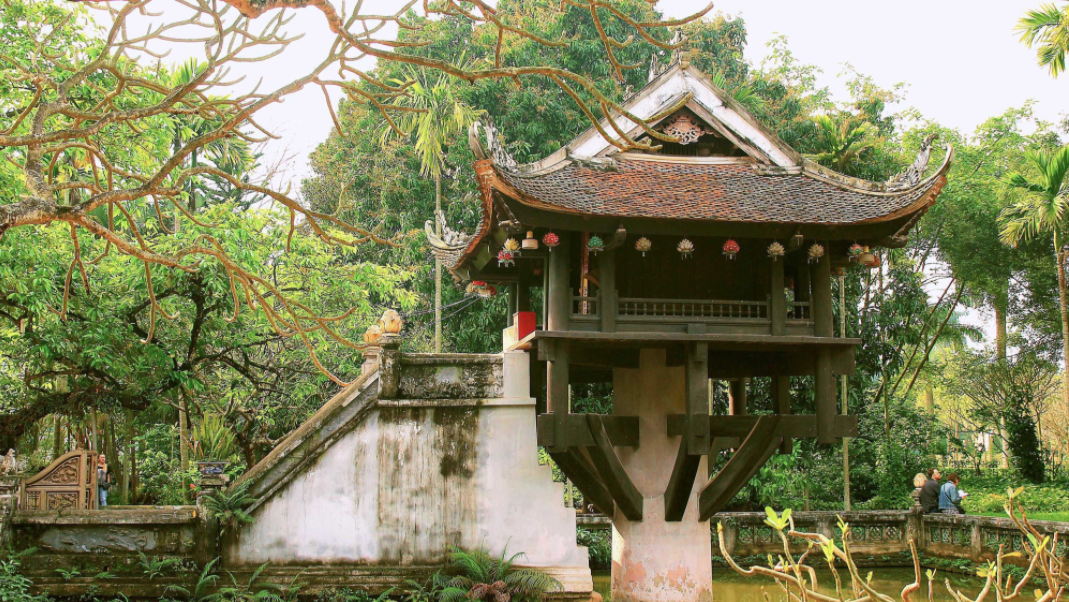 Photo by @khoitranduc
Photo by @khoitranduc
Tale & History
Research indicates that the pagoda was constructed under the Ly Dynasty by Emperor Ly Thai Tong between 1028 and 1054. According to legend, the Emperor dreamt of Quan Am Bo Tat, the female Bodhisattva of compassion, who guided him to sit atop a lotus flower. After discussing this vision with Monk Thien Tue, the Emperor resolved to build a sanctuary that mirrored the form of a lotus. In both Confucianism and Buddhism, the lotus symbolizes purity, fortune, and enlightenment as it blossoms and releases its fragrance while rooted in muddy waters. The One Pillar Pagoda is viewed as a testament of the Emperor’s deep respect for Quan Am Bo Tat.
In 1954, the original structure was destroyed during the final stages of French colonial rule in Vietnam, leaving only a stone pillar. However, in 1955, the government undertook reconstruction efforts, and the pagoda has since been preserved extensively.
Due to its unique architectural style, One Pillar Pagoda was designated as a National Historic Heritage in 1962 and gained recognition as one of Hanoi's remarkable historical monuments. In a notable acknowledgment in 2012, it was awarded the title of "the most unique architectural monument" by the Asian Records Association based in India.
Beauty and Structure
The One Pillar Pagoda is an architectural marvel, featuring an intricate complex of different structures integrated within its grounds. The main temple, known as Lien Hoa Dai, rests on a single stone pillar. Eight wooden beams symbolize the eight petals of the lotus flower that support the main building. The craftsmanship is exceptional, with each joint meticulously fitting to ensure the building’s durability. To access Lien Hoa Dai, visitors ascend a brick staircase comprising 13 steps that connect the temple to the waterfront.
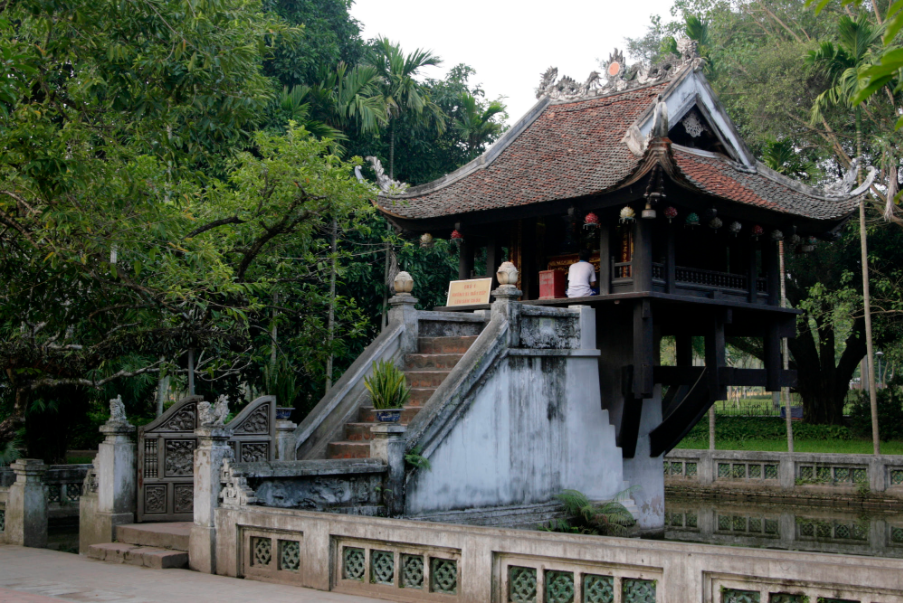 Photo by @minhlehong
Photo by @minhlehong
Inside the altar, visitors will find a solemnly adorned golden statue of Quan Am Bo Tat, alongside worship items such as a copper censer, ceramic vases, and gold-plated lotuses.
A significant feature of the complex is a Bodhi tree, a gift from Indian President Rajendra Prasad during his visit to Vietnam alongside President Ho Chi Minh in February 1958. This tree represents wisdom and tolerance in Buddhism, symbolizing the blossoming relationship between Vietnam and India.
Best Time to Visit
The One Pillar Pagoda is open to visitors daily during its operating hours. Worship rituals are held at the inner building twice each lunar month, on the first and the fifteenth, offering an opportunity to witness the revered Vietnamese tradition of honoring ancestors and deities.
The site welcomes guests from 8:00 AM to 6:00 PM every day. Admission is free for local residents, while international visitors are charged a small fee of VND 30,000 ($1.25).
How to Get There
One Pillar Pagoda is conveniently located on Chua Mot Cot Street in Ba Dinh, a central district of Hanoi. Taxis are the most popular mode of transport for those without private vehicles in Vietnam. From the Old Quarter or the city center, the journey to the monument takes approximately 15 minutes. Many visitors also opt for guided tours that encompass the One Pillar Pagoda and other attractions within the Ho Chi Minh Complex, with tours typically lasting around three hours.
Useful Information
- Location: Chua Mot Cot
- Best for: Family, couple, solo
- Entrance: Free
- Hours: 8:00-18:00, Everyday
- Distance to city center: 0.9km (0.6 mi)
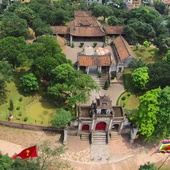
Co Loa Citadel
Being a cultural heritage, a testament to the creativity and technical skills of the old Vietnamese, Co Loa Citadel is definitely an ideal tourist destination that visitors cannot ignore when visiting Hanoi.
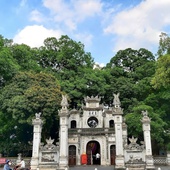
Quan Thanh Temple
Located on Thanh Nien Street, Quan Thanh Ward, Ba Dinh District, Hanoi, Quan Thanh Temple is a Taoist temple and known as one of Hanoi’s four sacred temples which were built to worship four protectors in four directions.
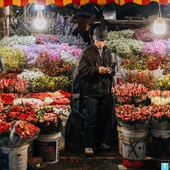
Quang Ba Flower Market
Without the normal hustle and bustle of normal markets, Quang Ba Flower Market is charming in its own way.








